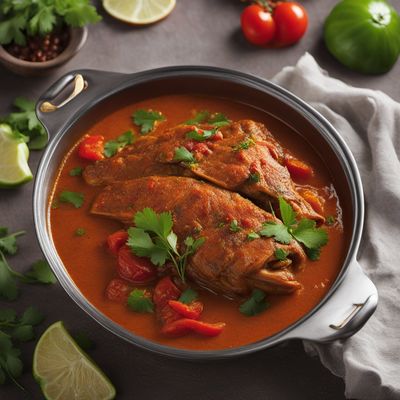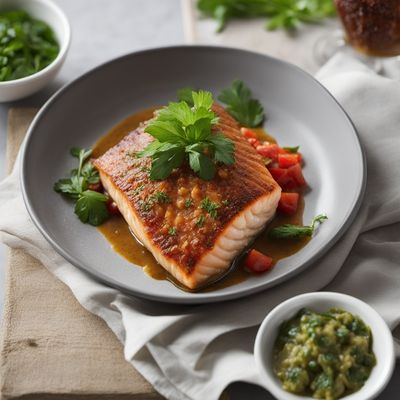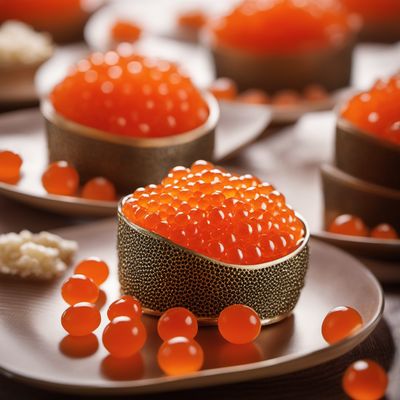
Ingredient
Other fish offal
The Hidden Gems of the Sea: Exploring Other Fish Offal
Other fish offal refers to the edible organs and parts of fish that are not commonly consumed, such as the liver, roe, cheeks, and collars. These offal cuts offer a range of unique characteristics, including rich flavors, varying textures, and distinct appearances. The liver, for example, is creamy and velvety, while the roe provides a burst of briny goodness. Cheeks are tender and succulent, and collars offer a combination of tender meat and flavorful fat. Incorporating other fish offal into your dishes can add depth and complexity to your culinary repertoire.
Origins and history
The consumption of fish offal has a long history, dating back to ancient civilizations that recognized the value of utilizing every part of the fish. In many coastal cultures, fish offal has been a staple in traditional dishes, showcasing the resourcefulness and sustainability of these communities. Today, fish offal is still celebrated in various cuisines around the world, particularly in Japan, where it is known as "kimo" and is highly prized.
Nutritional information
Other fish offal is a nutritional powerhouse, packed with essential nutrients. It is a great source of high-quality protein, omega-3 fatty acids, vitamins (such as vitamin A, D, and B12), and minerals (such as iron and zinc). Including other fish offal in your diet can contribute to overall health and well-being.
Allergens
Some individuals may be allergic to fish, and therefore, should avoid consuming other fish offal. Additionally, individuals with specific allergies to certain fish species should exercise caution when consuming offal from those particular fish.
How to select
When selecting other fish offal, look for fresh cuts that have a vibrant color, firm texture, and no signs of discoloration or unpleasant odor. The liver should be smooth and free from any blemishes, while roe should be intact and plump. Cheeks should be firm and moist, and collars should have a good balance of meat and fat.
Storage recommendations
To maintain the freshness and quality of other fish offal, it is best to store them in airtight containers or wrapped tightly in plastic wrap. Keep them refrigerated at temperatures below 40°F (4°C) and use them within a day or two for optimal flavor and texture.
How to produce
While producing other fish offal may not be feasible for amateurs, it is possible to source these cuts from local fishmongers, seafood markets, or specialty stores that offer a wide variety of fish products.
Preparation tips
Other fish offal can be prepared in various ways, depending on the specific cut. The liver can be pan-fried or used to make pâté, while roe can be enjoyed raw, marinated, or cooked. Cheeks can be grilled, sautéed, or braised, and collars are excellent when grilled or roasted. Experiment with different cooking techniques and pairings to fully explore the potential of other fish offal in your culinary creations.
Culinary uses
Other fish offal is a versatile ingredient that can be incorporated into a wide range of dishes. Liver pâté, roe sushi or pasta, grilled fish cheeks, and roasted collars are just a few examples of how other fish offal can be used to add depth and complexity to your culinary creations.
Availability
Other fish offal is commonly available in regions with a strong fishing industry or coastal areas where fish is a dietary staple. It can also be found in specialty seafood markets or fishmongers that offer a diverse selection of fish products.
More ingredients from this category
Recipes using Other fish offal

Crappit Heids with a Twist
Savoury Stuffed Fish Heads: A Modern Take on Crappit Heids

Crunchy Seafood Delight
Oceanic Fusion: Crunchy Crab and Fish Stomachs

Egyptian-style Spicy Fish Head Stew
Fiery Fish Head Delight: A Spicy Egyptian Stew

Yunnan-style Crab and Fish Stomachs
Yunnan Delicacy: Fragrant Crab and Fish Stomachs

Capelonghe Lyonnaise
Savory Stuffed Fish Rolls with Lyonnaise Flair

Grilled Spiced Fish with Tangy Citrus Glaze
Northeastern American Grilled Fish Delight

Lithuanian-style Orata
Baltic Sea Delight: Lithuanian-style Orata with Herbed Potatoes

Turkmen-style Stuffed Mullet
Savory Delight: Turkmen-inspired Stuffed Mullet

Cornish-style Three Sauce Fish
Cornish Coastal Delight: Three Sauce Fish Extravaganza
